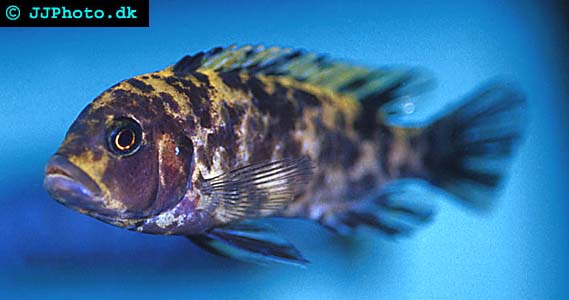Red Zebra - Maylandia estherae
Species name: Maylandia estherae
Synonym: Pseudotropheus estherae
Common Names: Cherry Red Cichlid, Red Zebra
Family: Cichlidae (Cichlids) , subfamily: Pseudocrenilabrinae
Order: Perciformes (perch-likes)
Class: Actinopterygii (ray-finned fishes)
Max. size: 13 cm / 5 inches
Environment: freshwater
Origin: Lake Malawi¸ Mozambique coast
Temperament: Aggressive.
Company: Can be kept with other species with the same temperament.
Water parameters: pH 7.5-8.5, temperature 24-28°C / 75-82° F
Aquarium setup: Keep one male to 3-4 females. Overstocking the aquarium may help to suppress the worst aggression. Requires stone formations that allow the fish good hiding places (one per fish) and free areas to swim on. Don’t use roots in your aquarium since they lower PH levels.
Feeding: Vegetable food..
Breeding: Mouth-brooder. The female will brood for approximately 3 weeks and cares ofr the fry approximately one week after they first leave her mouth. You can tell if a female is brooding by her enlarged mouth and the fact that she isn’t eating. Fry accepts most kinds of food however vegetables should be the stable diet. Brooding females can be isolated for more productive breeding. It is recommendable to try to make the isolation as short as possible to avoid that the females loses their social status which may cause fights once they are returned. Stress might cause the females to eat eggs and fry. Some fry may survive in a community tank.

Picture of OB Red Zebra cichlid - Maylandia estherae. Copyright www.jjphoto.dk
Didn't find the info you were looking for? Register for free and ask your question in our Aquarium forum !
Our knowledgeable staff usually responds to any question within 24 hours
Other African Cichlid Profiles:



